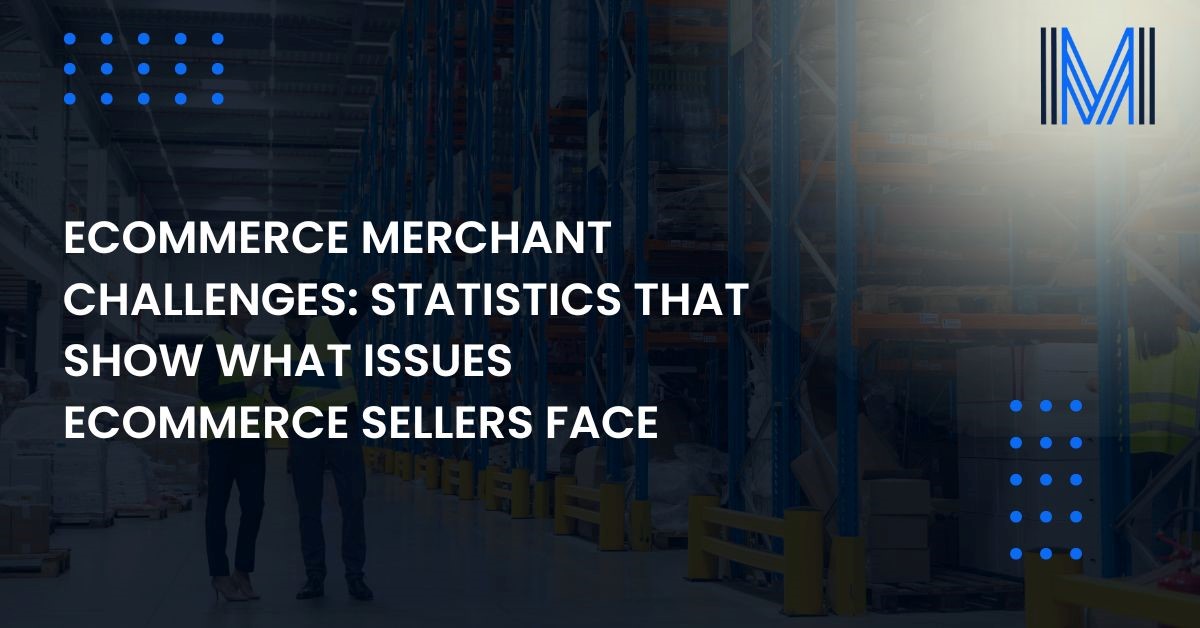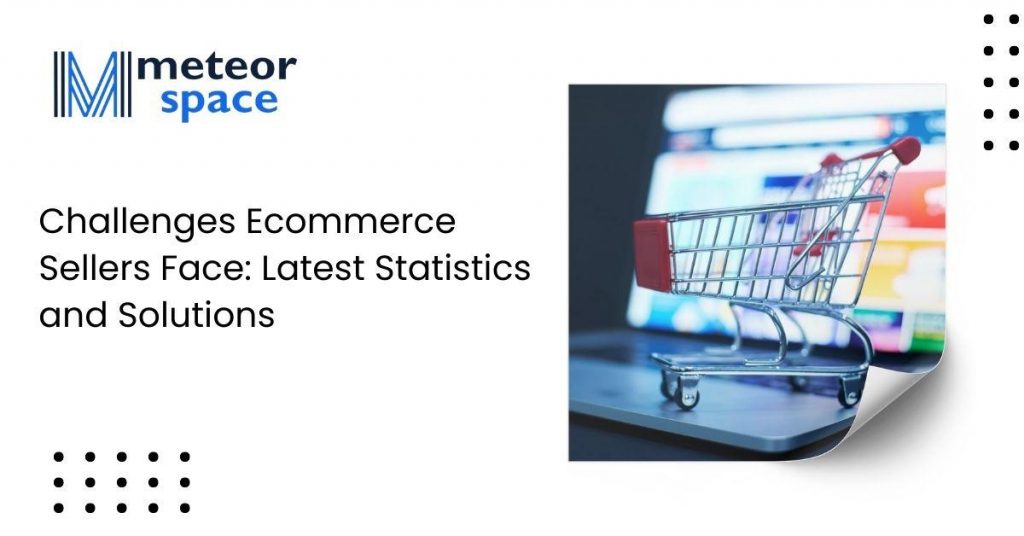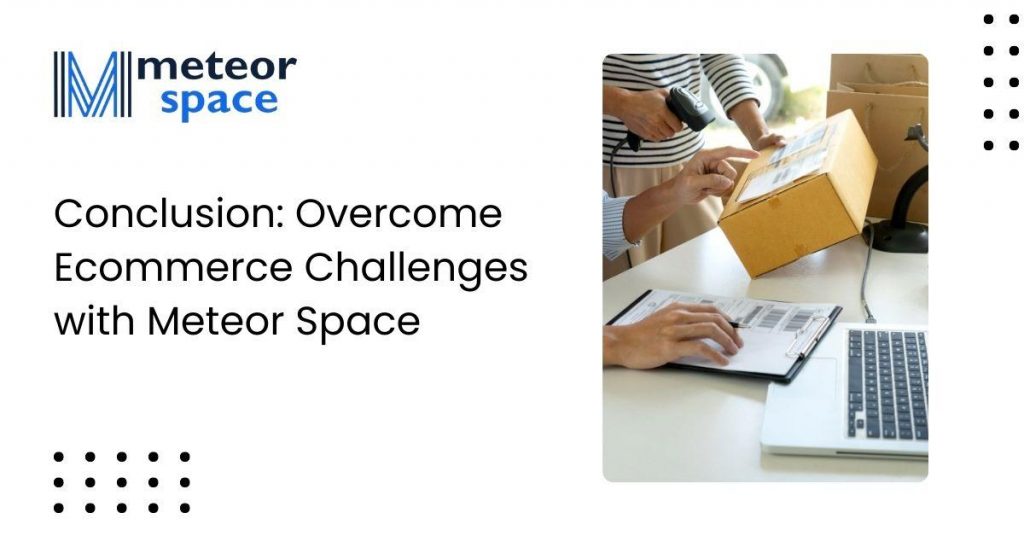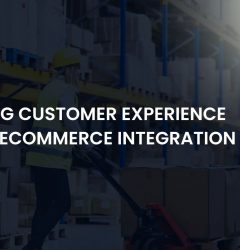11 Apr

Ecommerce is a thriving industry that continues to grow globally, but with that growth comes unique challenges. To stay competitive, ecommerce merchants must deliver an outstanding customer experience, tackle logistical issues, and adopt innovative strategies. In this blog, we’ll explore the most recent statistics that illustrate these challenges and offer practical solutions to help ecommerce sellers navigate this fast-paced industry.
Key Statistics Shaping the Ecommerce Landscape
According to recent data, global ecommerce sales reached $6.3 trillion in 2024, and they’re forecasted to grow to $8.1 trillion by 2026 (Statista, 2024). With such immense growth, it’s no wonder that ecommerce has become a competitive space where merchants must strive to stand out.
Additionally, 59% of internet users globally purchase online each week, with consumer electronics ($1.1 trillion) and fashion ($950 billion) being the top-grossing sectors (DataReportal, 2024). These statistics highlight how critical it is for merchants to continually adapt their strategies to meet growing consumer demand.
Major Challenges Faced by Ecommerce Sellers
1. Rising Competition and Customer Expectations
The accessibility of ecommerce has allowed thousands of new merchants to enter the market. This influx has created a highly competitive environment where 40% of ecommerce businesses fail within the first two years (Fundera, 2024). Consumers now expect personalized, seamless shopping experiences as the norm.
Solution: Invest in user experience (UX) improvements, such as faster load times, easy navigation, and personalized product recommendations. Use data analytics tools like Google Analytics 4 or Shopify Analytics to track customer behavior and adjust your strategies accordingly.
2. Logistics and Fulfillment Issues
With 2.5 billion online shoppers in 2024 (Statista, 2024), the pressure on logistics and fulfillment has intensified. Delays in shipping, stockouts, and complicated return processes can turn customers away. In fact, 69.8% of online shoppers abandon their carts due to unexpected shipping costs or delays (Baymard Institute, 2024).
Solution: Consider adopting a hybrid fulfillment model. Use third-party logistics providers (3PL) to manage inventory and shipping while maintaining in-house control over critical operations. Integrating an omnichannel approach—where customers can order online and pick up in-store—can also improve the customer experience. Working with a reliable ecommerce order fulfillment service like Meteor Space, a trusted name in UK Fulfillment Services and Irish Fulfillment, can streamline these operations.
3. The Shift to Omnichannel Retailing
According to Shopify’s 2024 report, businesses that blend online and offline strategies see 27% higher profits than those that don’t. Consumers expect a seamless shopping experience across all channels—whether they’re browsing on a website, shopping via social media, or visiting a physical store.
Solution: Invest in omnichannel tools to create a unified shopping experience. Platforms like Shopify POS allow merchants to sync inventory, sales, and customer data across all platforms, ensuring a smooth and cohesive customer journey.
4. Social Commerce and Its Growing Influence
Social commerce has revolutionized how people shop online. In China alone, ecommerce merchants generated $1.3 trillion in sales from social commerce in 2024—far outpacing markets like the U.S. (eMarketer, 2024). Social media platforms like TikTok and Instagram are now powerful ecommerce engines.
Solution: Leverage social commerce by integrating direct shopping features on your brand’s social media pages. Use Instagram Shopping or TikTok’s in-app purchasing for a frictionless checkout experience. Influencer partnerships and user-generated content can also boost product discovery and conversions.
Current State of Global Ecommerce: A Data-Driven Overview
Ecommerce Sales Continue to Surge
Global ecommerce sales have increased to $5.7 trillion in 2023 (Statista, 2023), accounting for nearly 21% of total global retail sales. This growth is fueled by several factors, including the convenience of shopping online, mobile commerce (m-commerce), and improved internet penetration.
To put this into perspective, 2.14 billion people worldwide purchased goods or services online in 2021, and this figure continues to grow as more consumers embrace digital shopping (ThriveMyWay, 2023). Merchants must be prepared to meet this demand by offering a frictionless, convenient shopping experience that can rival their competitors.
B2B Ecommerce is Expanding Rapidly
It’s not just the B2C sector that’s booming. The B2B ecommerce market is projected to grow at a rate of 18.7% annually, reaching $25.65 trillion by 2028 (Fortune Business Insights, 2023). This rise signals the growing comfort of businesses purchasing products and services online, driving ecommerce sellers to offer tailored solutions for other businesses.
Solution: B2B merchants should focus on creating personalized experiences for their clients by offering custom pricing, bulk order capabilities, and easy reordering options. Automating sales processes through CRMs and AI-driven tools can also help streamline operations and enhance client satisfaction.
Pandemic-Induced Ecommerce Trends
The COVID-19 pandemic accelerated digital adoption. In the U.S., ecommerce sales jumped to $960 billion in 2021, a 44% increase from 2019. Post-pandemic, 60% of U.S. consumers still prefer online shopping (eMarketer, 2024).
Solution: Capitalize on digital shopping habits by offering convenient options such as curbside pickup, same-day delivery, and transparent return policies. Partnering with a full-service ecommerce fulfillment for electronics, supplements, or pet products provider ensures operational scalability.
Tactics for Ecommerce Growth in a Competitive Marketplace
1. Optimize for Mobile Commerce (M-Commerce)
With 73% of ecommerce sales projected to happen on mobile devices by 2025 (Statista), optimizing for m-commerce is vital.
Solution: Ensure your online store is mobile-friendly. Streamline checkout processes, reduce load times, and integrate mobile payment options. Consider developing an app that delivers personalized recommendations and push notifications.
2. Focus on Customer Retention Over Acquisition
It costs 5x more to acquire a new customer than to retain an existing one (Invesp, 2024). Yet many ecommerce merchants still prioritize acquisition.
Solution: Implement loyalty programs, personalized email campaigns, and subscription models. Provide excellent post-purchase support and simple return experiences to increase retention.
3. Implement AI and Machine Learning for Personalization
58% of ecommerce businesses use AI tools for personalization, product recommendations, and streamlining operations (Forbes, 2024).
Solution: Integrate AI-powered chatbots, predictive analytics, and dynamic content tools. Use this data to predict customer behavior and personalize offers at scale.
Challenges Ecommerce Sellers Face: Latest Statistics and Solutions

Fulfillment and Logistics Challenges
1. Processing Time for Outbound Orders
62% of shoppers expect delivery within 3-5 days (Invesp, 2024). Missing this window can result in lost sales and poor reviews.
Solution: Streamline your processes with automation tools like WMS and partner with efficient providers of ecommerce pick and pack services.
2. System Integration and Technology Gaps
39.4% of merchants outsource fulfillment but lack proper integration with existing platforms (SG Logistics, 2024).
Solution: Use integrated platforms like Shopify or BigCommerce, or choose a partner offering ecommerce integration services for smoother operations.
Technology and System Integration Issues
3. System Integration Challenges
Fragmented systems for inventory, payment, and shipping cause errors and inefficiencies.
Solution: Use APIs or all-in-one ecommerce suites to unify your backend systems. This reduces manual work and error rates.
4. The Imminent Death of Third-Party Cookies
Google is phasing out third-party cookies in 2024. Brands now face challenges in targeting and personalization.
Solution: Focus on first-party data collection through sign-ups, loyalty programs, and direct interactions. Tools like GA4 support privacy-first tracking.
Impact of COVID-19 on Ecommerce
5. Surge in Online Demand
Lockdowns created a spike in ecommerce, with UK retail stores seeing a 5.1% decline in 2020, while online sales soared (ONS, 2024).
Solution: Forecast demand accurately and diversify supply chains. Consider pallet storage services with racking solutions to expand storage capacity quickly.
6. Rising Operational Costs
Warehouse rent has increased by 6.2% annually since 2022 (JOC, 2024), impacting profitability.
Solution: Use pallet storage solution in Northern Ireland or outsource to scalable 3PL providers offering pick and pack warehouse fulfillment.
Customer Experience and Personalization
7. Personalization Gap
85% of brands say they personalize, but only 60% of consumers agree (Segment, 2024).
Solution: Use AI and first-party data to personalize communications, recommendations, and offers.
8. Importance of Customer Service
62% of online shoppers say past customer service impacts future buying decisions (Shopify, 2024).
Solution: Provide live chat, fast response times, and frictionless returns. Invest in a customer support stack.
The Future of Data and Personalization
9. First-Party Data
Third-party cookies are on the way out. First-party data is now the gold standard for ecommerce personalization.
Solution: Build customer profiles through direct interactions. Use loyalty programs, on-site quizzes, and email campaigns.
Rising Costs and Financial Struggles
10. Rising Social Media Advertising Costs
CPM for social ads rose 21.7% in 2023 and continues climbing in 2024 (DataReportal).
Solution: Prioritize SEO, influencer marketing, and UGC to reduce ad spend. Optimize audience targeting to maximize ROI.
11. Distribution Costs and Supply Chain Issues
24.7% of merchants cite high delivery costs as a major challenge (Logistics Bureau, 2024).
Solution: Partner with carriers offering bulk discounts. Explore 2 man white glove delivery service for high-ticket or fragile items.
12. Profitability Challenges Due to Rising Costs
Up to 12% of merchants are unprofitable due to high fulfillment and distribution costs.
Solution: Regularly audit your operations. Use warehouse services for ecommerce that include automation and error reduction tools.
Conclusion: Overcome Ecommerce Challenges with Meteor Space

Running a successful ecommerce business means overcoming numerous challenges, from fulfillment to personalization and rising costs. As an ecommerce seller, you need a reliable partner to manage these complexities while you focus on growth.
That’s where Meteor Space comes in. As a leading fulfillment provider, we offer a comprehensive range of services to streamline your operations:
- Pick and pack fulfillment services
- Pallet storage warehouse solutions
- Specialized support for pet product fulfillment & animal supplies, cbd fulfillment services, and more
- Seamless ecommerce integration order management
- Fast, reliable order fulfillment services across the UK and Ireland
With Meteor Space, you get a trusted partner for all your logistics, warehousing, and delivery needs.
Ready to scale with confidence? Contact Meteor Space today and take your ecommerce business to the next level!
Author:
Mishal Khan
Mishal is a dedicated copywriter and content writer with experience across various niches. Currently, Mishal is focused on writing guides and other compelling blogs on warehouse management, logistics and more, crafting engaging and informative content to help businesses understand and master their supply chain. Passionate about delivering quality content, Mishal aims to make complex topics accessible and enjoyable for all readers.
UPDATED ON: 11th April 2025



